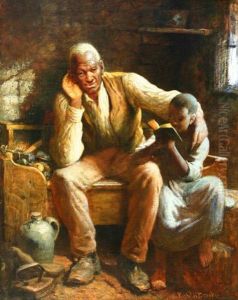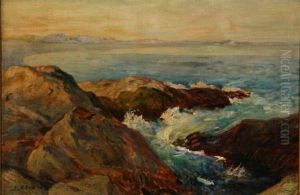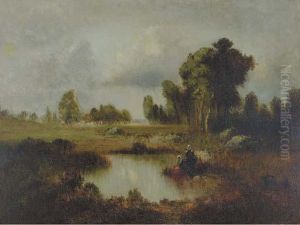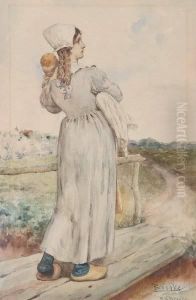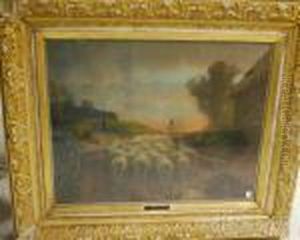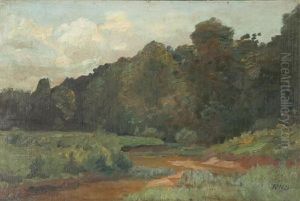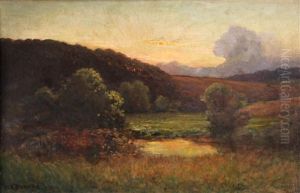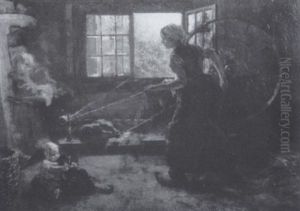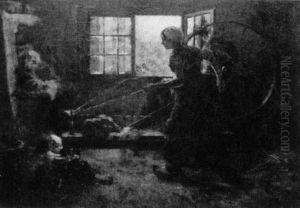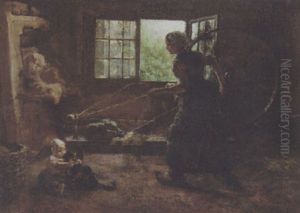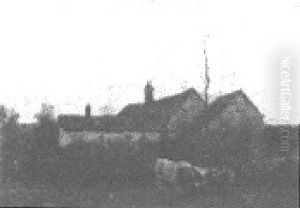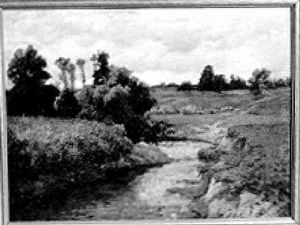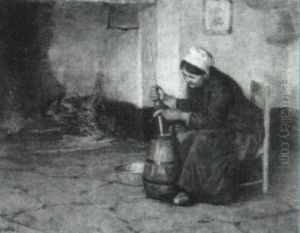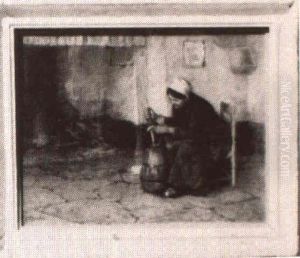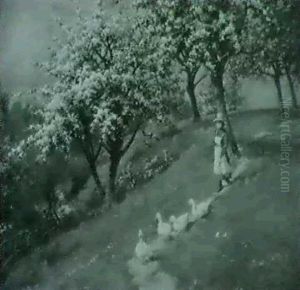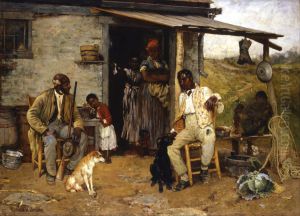Richard Norris Brooke Paintings
Richard Norris Brooke was an American painter known for his realistic depictions of rural African-American life. He was born on March 20, 1847, in Warrenton, Virginia, and he displayed an early interest in art. Brooke pursued his artistic education at the Pennsylvania Academy of the Fine Arts in Philadelphia where he studied under the tutelage of Thomas Eakins, who was one of the most significant American artists of that time. Eakins' influence is evident in Brooke's commitment to realism and his methodical approach to painting.
After completing his studies, Brooke returned to Virginia where he began his professional career as a portrait painter. His work eventually expanded to include genre scenes, which depicted everyday life. One of Brooke's most famous works, 'A Pastoral Visit' (1881), exemplifies his genre style. This painting portrays an African-American family gathered around a preacher in their home and is noted for its dignified and sympathetic portrayal of the subjects at a time when such depictions were uncommon.
Throughout his career, Brooke was active in the art community. He taught at the Corcoran School of Art in Washington, D.C., and later served as the director of the school from 1886 to 1895. His teaching and directorship roles at the Corcoran helped shape a generation of artists in the Washington area. Brooke's commitment to education and the arts was also evident in his involvement with the establishment of the Virginia Museum of Fine Arts.
Richard Norris Brooke's paintings are held in various public collections, including the Virginia Museum of Fine Arts and the Corcoran Gallery of Art. He continued to paint and exhibit his work into the early 20th century, maintaining his reputation as a skilled and sensitive painter of American life. Brooke passed away on May 14, 1920, leaving behind a legacy that captured the nuances and complexities of the social and cultural fabric of his time.
